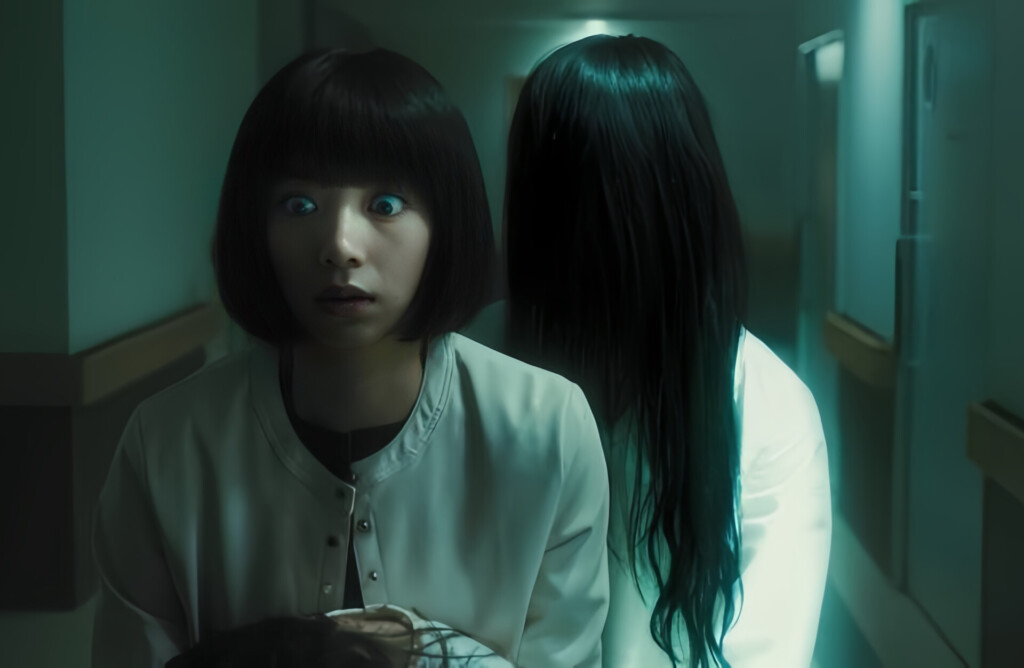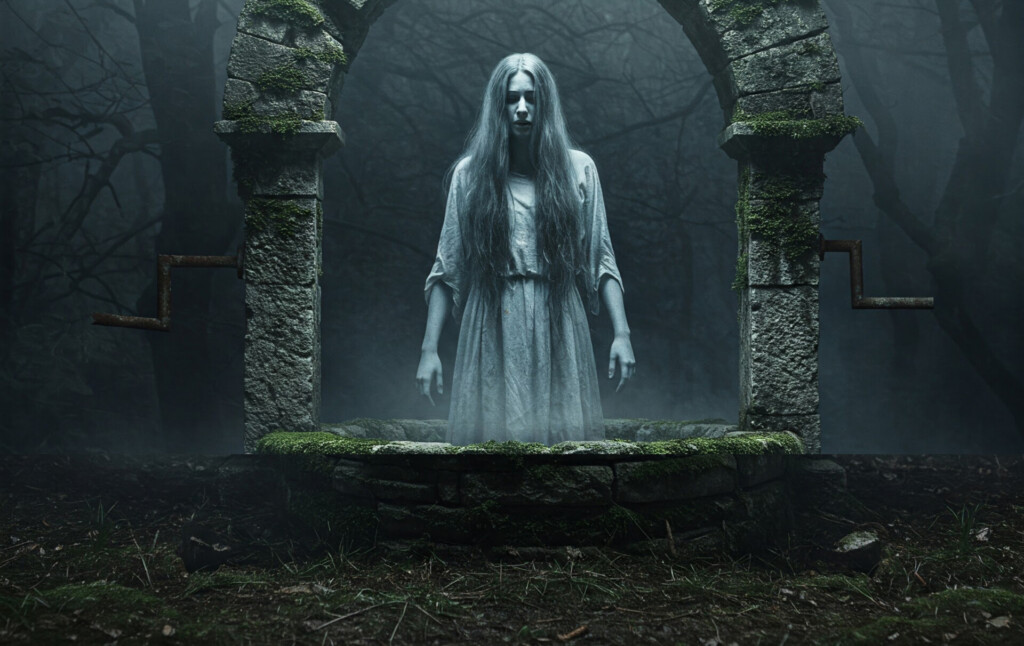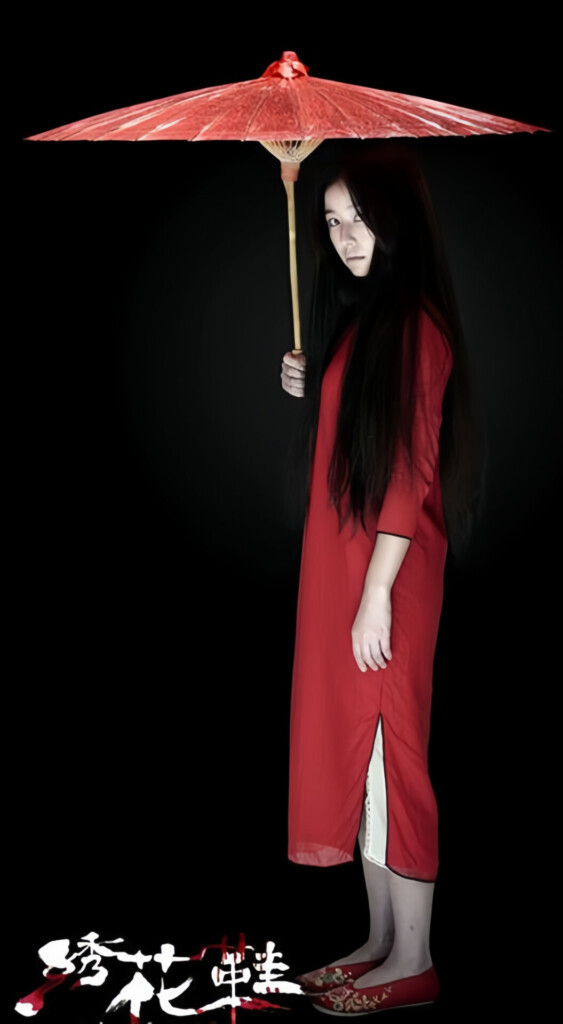Have you ever wondered why, among countless ghostly figures, the long-haired woman in a white dress always dominates the scene? Why not a beer-bellied uncle or an old lady with a feather duster? Perhaps behind this haunting image lies a long history of cultural, psychological, and subconscious fears deeply ingrained in human minds.

The Long-Haired Woman in White: The “Queen” of the Spirit World
Undoubtedly, the ghostly figure of a woman with long, flowing hair in a white dress has become an iconic image in folklore, horror films, and urban legends. But why is it always a woman? Why does her hair have to be long? And why must it be white?
To uncover this mystery, let’s dissect the key elements that have shaped this chilling archetype.
5 Factors Behind the Iconic Ghostly Woman
1. White – The Color of Mourning and Tragedy
In many Asian cultures, white is not just a symbol of purity but also a color associated with funerals, death, and wandering spirits. This explains why the image of a woman in a white dress, silently roaming the night, sends shivers down people’s spines.

Think of Okiku, the tragic spirit from Japanese folklore—wrongfully murdered, she returns clad in a white kimono, sobbing as she counts missing plates by a well. In Vietnamese culture, the tragic figure of Mỵ Châu, floating in the sea with her white feathered cloak, also embodies the sorrow of spirits lingering in the mortal world.
2. Long Hair – Beauty That Turns Haunting
Long hair has always been associated with feminine beauty, but when combined with ghostly imagery, it transforms into something terrifying. Hair covering the face creates an eerie sense of the unknown, amplifying fear when it is suddenly lifted to reveal a pale, lifeless expression.
It’s not hard to picture Sadako crawling out of the TV in The Ring, her soaked black hair obscuring her face. Or Kayako from Ju-On, whose silky locks, once a sign of elegance, now suffocate viewers in sheer terror.
3. Spirits of Forgotten Women
Throughout history, women have often faced oppression and injustice. The ghostly female figure represents a form of rebellion against these sufferings. Many of these spirits carry unresolved grudges, unable to find peace—serving as a chilling reminder of past tragedies.

The story of Oiwa—a wife poisoned by her husband in an arranged marriage—is the clearest example. Her vengeful spirit returns with a disfigured face to haunt the traitor. According to Wikipedia, Yotsuya Kaidan follows Oiwa and Tamiya Iemon, revolving around betrayal, murder, and supernatural revenge. It is Japan’s most famous ghost story, adapted over 30 times and still influencing the horror genre today.
Similarly, in Japan folklore, the ghost of Kuchisake-onna appears every night, weeping as she asks passersby, “Am I beautiful?”—a seemingly harmless question that hides a buried tragedy.
4. The Eastern Influence – Birthplace of the Nightmare
Many famous ghost stories from China, Japan, and Korea have helped shape the long-haired female specter in popular culture. In Eastern beliefs, death is not the end but part of a cycle. Spirits that cannot reincarnate remain trapped between two worlds, often appearing in white robes with flowing hair—an eternal reminder of unresolved pain.
Unlike Western horror, where ghosts typically haunt abandoned houses, Asian spirits manifest in wells, deserted hallways, or eerie hotel rooms. Despite the passage of time, this haunting image continues to grip our deepest fears.
5. When Beauty Becomes Terrifying
Humans are inherently disturbed by things that are familiar yet distorted. A beautiful woman with unnaturally pale skin, hollow eyes, and an unsettling smile is far more terrifying than a grotesque monster.
This is why beautiful ghosts are often more frightening than skeletal spirits. People might not flinch at the sight of a skeleton, but a ghostly pale face with an eerie grin? That’s nightmare fuel.
The Modern Ghostly Woman: Evolution of Fear
The long-haired woman in white has evolved with time, taking on new and even more disturbing forms:
👻 The Digital Ghost: Haunting victims through phones, social media, and deepfake technology (Unfriended, Host).
👻 Genderless Phantoms: Breaking traditional gender norms of horror, making spirits even more unpredictable.
👻 Ghosts in Video Games: Horror games like Fatal Frame and Phasmophobia have taken this legend to the next level.
Ghosts or Hallucinations? This question blurs the line between what we see and what our minds conjure, making us wonder whether the haunting images are real or just products of our imagination.
Will Male Ghosts Ever Dethrone the Female Phantom?
Despite its terrifying presence, the long-haired female ghost reflects societal fears, injustices, and mysteries yet to be unraveled. But who knows—maybe one day, male ghosts will take center stage, bringing forth an entirely new realm of horror?
For now, if you ever spot a long-haired figure in white at night, don’t overthink it. Just run! You can question later whether it was really a ghost.
And… what are you thinking? Maybe all these long-haired, white-dressed ghosts are just wearing their company uniforms? 👻😏
